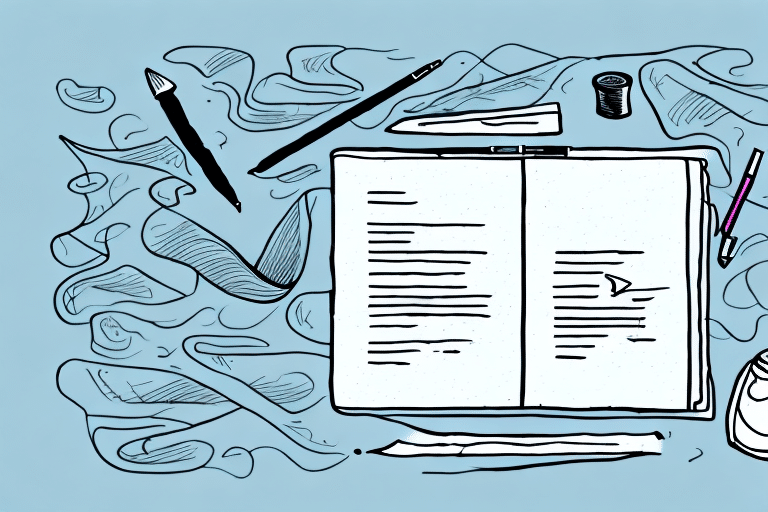SOPs are an essential part of any business. They are written instructions that help organizations follow standardized processes and ensure consistency in their operations. SOPs are critical for businesses of all sizes, as they help organizations maintain quality, eliminate human errors, and improve efficiency.
In this article, we will explore what an SOP is, how to write it effectively, and tips for rolling it out to your employees.

What is an SOP?
A Standard Operating Procedure (SOP) is a document that outlines the step-by-step instructions to carry out a specific task or activity. Standard Operating Procedures act as a roadmap for businesses to follow in order to carry out their operations consistently and efficiently. They are mostly used to communicate the best practices of an organization’s procedures to its employees. They are also known to reduce the risk of errors and accidents.
Creating Standard Operating Procedures involves a lot of research and analysis of the organization’s existing processes. It requires a thorough understanding of each task or activity that needs to be carried out and the potential risks involved in each. Once created, the SOPs must be reviewed and approved by all stakeholders that oversee the organization’s operations.
What are the Benefits of Having Standard Operating Procedures?
One of the key benefits of having an SOP is that it helps to ensure consistency in the quality of work performed by employees. Standardized procedures also ensure that your employees are better equipped to execute their tasks with greater accuracy and efficiency.
Another benefit of having a Standard Operating Procedure is that it can help reduce the risk of accidents and errors. By outlining the best practices for each task or activity, employees are less likely to make mistakes that could result in injury or damage to equipment or property.
Are Standard Operating Procedures Unchangeable?
It’s important to note that SOPs are not set in stone. In fact, they should be reviewed and updated periodically to ensure they remain effective, compliant with regulations, and aligned with the evolving needs of an organization.
On the one hand, Standard Operating Procedures should not be changed haphazardly. And on the other, they should also not be so rigid that they hinder adaptation and improvement. Striking the right balance is key to maintaining effective and efficient procedures within an organization. Therefore, regular reviews, approvals, and controlled changes should be part of the SOP management process to ensure they remain a valuable resource for guiding the organization’s operations. Additionally, as the organization evolves and new technologies are introduced, the SOPs should be updated to reflect these changes.
A well-written Standard Operating Procedure is an essential tool for any organization looking to improve its efficiency, reduce the risk of errors and accidents, and ensure consistency in the quality of work performed by employees. By taking the time to create and maintain an effective standard operating procedure, organizations can set themselves up for long-term success and growth.
How to Write Standard Operating Procedures Effectively?
Writing an effective SOP requires careful planning and attention to detail. You must also ensure its objective, consistency, efficiency, and compliance with the organization’s or department’s purpose. Here are ten tips to help you craft an effective SOP:
-
Identify the purpose and scope of the sop:
Before writing the SOP, define its purpose and scope. This will help you to organize the document and make it more specific. The purpose and scope should be clearly stated at the beginning of the document.
-
Identify stakeholders:
- Determine who will be using and referencing the SOP. Consider current and future stakeholders including employees, managers, team leads, regulators, and auditors.
- In some cases, where the business caters to the local community, the general public may also need to be considered. As they may want to understand how certain processes, especially those with environmental or safety implications, are carried out.
-
Gather information:
Collect all relevant information about the process or task. Consult with subject matter experts (SMEs) and employees who perform the same or similar tasks. Spend enough time in online research and browse through various ready SOP documents and templates.
-
Structure and format:
Organize the SOP with a consistent and easy-to-follow structure. This provides you with the basis on which you can define all the requisite specifics in detail. It also makes the task easier and reduces the time it takes to finish the project.
-
Common sections in an SOP include:
Purpose of the Document
Vision and Mission (for the users of the document)
Scope of Work (mention all kinds of foreseeable sub-tasks while leaving room for future additions)
Strategy (overall approach methodology)
Key Responsibilities (defining each task)
Key Performance Indices (specifying the expected outcomes)
Procedure steps (Including Research, Reporting, and Way Forward)
References (include links to sub-docs)
Appendices (e.g., forms and templates that the task head can leverage)
Definitions (if necessary) -
Use clear and concise language:
Avoid using technical words or jargon that employees may not understand. Use simple language and avoid ambiguity. The document should be easy to read and understand even by a common person outside of your company or business.
-
Organize the SOP content effectively:
Present instructions in a logical sequence, with each step clearly numbered or bulleted. Use action verbs to describe each step. Use headings, subheadings, and bullet points to organize your content. This will make your Standard Operating Procedure more accessible and easy to navigate.
-
Include supporting visuals in the SOP:
Visual aids enhance comprehension. Therefore, remember to include pictures, diagrams, flowcharts, and videos to give employees a better understanding of the procedures they must follow. Visual aids can help to clarify complex processes and make the document more engaging.
-
Test the steps mentioned in the SOP:
Before finalizing the standard operating procedure for any task, test it in a real-world setting as far as possible. Gather feedback from the intended users of the document and identify issues or areas for improvement, if any. Test the SOPs by following the instructions to ensure that they achieve their purpose. Also, test the document with superiors to see if it meets their needs and expectations. The document should be practical and effective.
-
Update the SOP document regularly:
As technology evolves, the way to execute tasks also changes. So, review the SOP periodically to make sure that it reflects current practices and is still relevant. Update the document if any changes are necessary. The document should be up-to-date and accurate. Also, establish a system for version control to track changes, revisions, and updates to the SOP over time. Further, define the process for informing all stakeholders whenever there is a change in the document.
-
Gather input from your employees:
Involve employees in the development of your standard operating procedures. Their input can be invaluable, as they are the ones who will be using it daily. This can also help to increase employee buy-in and engagement. Additionally, remember to encourage a culture of continuous improvement. Do this by asking members to suggest changes or improvements to the SOPs based on their experiences.
-
Ensure compliance with regulations:
Ensure that the SOP complies with all applicable laws and industry standards. The document should be legally compliant and aligned with best practices. If applicable, include safety precautions, regulatory requirements, and quality control measures.
-
Keep the SOP simple:
Keep the standard operating procedure as simple as possible. Avoid adding unnecessary steps or information that may confuse employees and increase the probability of errors. The document should be straightforward and easy to follow.
-
Train and educate employees on every SOP:
Train and educate employees on the SOP and make sure they understand it. Repeat the training periodically. This will help you effortlessly embed the standard operating procedures in your employees’ work routines. The document should be accompanied by effective training and education programs.
By following these tips, you can write effective SOPs that will help your organization achieve its goals and maintain high standards of quality and compliance.
Strategies for Rolling Out the Processes Defined
Rolling out your SOP to employees requires careful planning and execution.
-
Involve employees in the rollout:
Involve employees in the rollout process and explain the importance of the SOP. Also, encourage questions and feedback to ensure that they understand how it works.
-
Provide training and support:
Provide employees with the necessary training and support to understand each SOP. This can be in the form of training sessions, workshops, or online courses. Furthermore, you can create short infographic videos for perpetual storage and use.
-
Link the SOP to performance metrics:
Show employees how the SOP links to performance metrics and how it can help them achieve their KPIs. This will help them understand the importance of the SOP. It will also motivate your staff to proactively follow the standard operating procedures every day.
-
Leverage technology:
Use technology to make the standard operating procedures more accessible to employees. This can include using a company intranet, employee apps, or a document management system.
-
Monitor compliance:
Monitor compliance with the SOP to ensure that employees are following the procedures correctly. You can do this through observation or audits.
-
Provide feedback and recognize good work:
Provide feedback to employees on how well they are following the SOP. To motivate them further, you can also recognize their good work and celebrate every small achievement with the company
Making it Accessible with Employee Apps and Intranets
Use technology such as a company intranet, employee communication apps, or a document management system to make the SOP easily accessible to employees. Employee apps are becoming increasingly popular for organizations to communicate with their employees.
- Increased accessibility: Employees can access standard operating procedures from their desktops, smartphones, or tablets anywhere and at any time.
- Mobile-friendly: Employee Apps can make the SOP mobile-friendly> So, choose one that can handle the scale and is flexible to change in short notice periods.
- Better engagement: Intranets and Employee apps provide a platform for employees to engage with the SOP and provide feedback or ask questions.
- Increased accountability: By setting up Read Acknowledgements, Intranets or Employee communication apps provide a way to track and ensure that employees have read and understood the SOP.
- Direct communication: Intranets and Employee Communication apps provide a direct communication channel between managers and employees regarding the SOP.
Standard operating procedures are essential for any organization to maintain operational consistency and efficiency. Writing an effective SOP requires careful planning and attention to detail. Rolling it out to employees requires effective communication and support. Using employee apps or other technology can make the whole process easier to define and manage. It also helps improve employee engagement without doing anything extra. By following these guidelines, you can create an SOP that is clear, concise, and effectively communicated to your employees.
If you’d like to DIY, then follow the steps in this blog. And if you would like to start off with a ready advantage from the word go, check out the most recommended platform of 2022.













